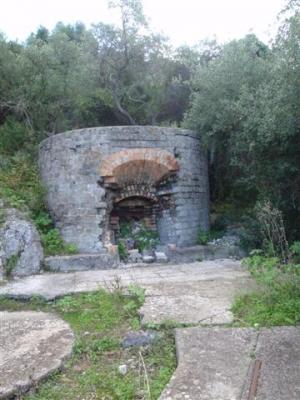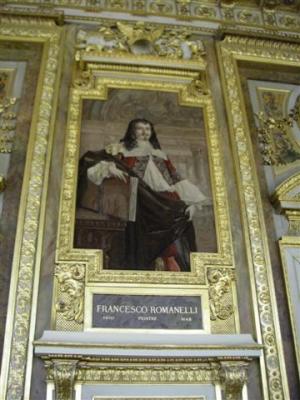Continued from yesterday”¦ As we were leaving the Siege Tunnels, the driver suggested that we walk down the hill so we could stop at two more sites, the City Under Siege display and the Moorish Castle. The site we wanted to see most, the WWII tunnels, was also on the way down, but it just happened to be closed for the day. Here is a mamma and baby monkey hanging out near the tunnels.

We passed the last remaining lime kiln in Gibraltar. Lime was heavily used up through the late 1800’s. It had many purposes, which were not detailed other than to mention that water cisterns were painted with it to keep the water bacteria free and it was dumped into the graves of people who died of some contamination to keep the contamination from spreading. Interesting. A secondary reason we put this photo in so you can get an idea of what the foliage is like on the rock.

The Siege exhibit is housed in some of the first buildings the British put up in Gibraltar after taking it over, originally intended for gunpowder storage. The exhibit is small, but remarkably well done. There are signs describing the horrors the people had to suffer, with mannequins depicting the struggles described. Over 7,000 people were Continue reading

